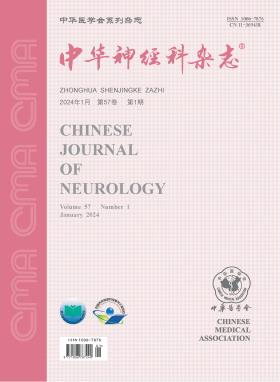Association between Clock T3111C and T257G gene polymorphisms and sleep epilepsy in a Hunan Han population
Q4 Medicine
引用次数: 0
Abstract
Objective To investigate the association between the Clock T3111C and T257G gene polymorphisms and sleep epilepsy patients in Han population of Hunan province. Methods Three hundred and eleven subjects with epilepsy(sleep epilepsy group(n=112), aperiodic group(n=95), awakening epilepsy group(n=104)) and 300 sex- and age-matched healthy controls were enrolled in the study. Genomic DNAs were extracted from peripheral blood leucocytes by phenol-chloroform methods. The Clock T3111C and T257G polymorphisms were detected by polymerase chain reaction-restriction fragment length polymorphism(PCR-RFLP). Results (1) Two genotypes(TT and TC) were detected in Clock T3111C. The frequency of Clock site T3111C genotypes in all of the people was 86.09%(TT,526/611), 13.91%(TC,85/611), 0(CC), T allele gene frequency was 93.04%(1134/1222) and C allele gene frequency was 6.96%(85/1222). There was no significant difference in genotype and gene distribution of Clock gene T3111C polymorphism between sleep epilepsy group, aperiodic group, awakening epilepsy group and control group.(2)Two genotypes(TT and TG) were detected in Clock T257G. The frequency of Clock site T257G genotypes in all of the people was 85.92%(TT,525/611), 14.08%(TG,86/611), 0(GG), T allele gene frequency was 92.96% (1136/1222) and G allele gene frequency was 7.04%(86/1222). There was no significant difference in genotype and gene distribution of Clock gene T257G polymorphisms between sleep epilepsy group, aperiodic epilepsy group, awakening epilepsy group and control group.(3)There was an almost complete correspondence(complete linkage disequilibrium) of bases between the positions 257 and 3111. Conclusion Clock gene T3111C and T257G polymorphisms are not associated with sleep epilepsy in Han population of Hunan province. Key words: Circadian rhythm; CLOCK proteins; Epilepsy; Polymorphism; single nucleotide湖南汉族T3111C和T257G基因多态性与睡眠癫痫的关系
目的探讨湖南汉族人群T3111C和T257G基因多态性与睡眠性癫痫的关系。方法选取311例癫痫患者(睡眠性癫痫组112例、非周期性癫痫组95例、觉醒性癫痫组104例)和300例性别、年龄相匹配的健康对照。采用苯酚-氯仿法从外周血白细胞中提取基因组dna。采用聚合酶链反应-限制性片段长度多态性(PCR-RFLP)检测Clock T3111C和T257G多态性。结果(1)Clock T3111C检测到TT和TC两种基因型。所有人群中Clock位点T3111C基因型频率分别为86.09%(TT,526/611)、13.91%(TC,85/611)、0(CC), T等位基因频率为93.04%(1134/1222),C等位基因频率为6.96%(85/1222)。Clock基因T3111C多态性在睡眠癫痫组、非周期性癫痫组、觉醒癫痫组和对照组之间的基因型和基因分布无显著差异。(2)Clock T257G中检测到TT和TG两种基因型。所有人群钟位点T257G基因型频率分别为85.92%(TT,525/611)、14.08%(TG,86/611)、0(GG), T等位基因频率为92.96% (1136/1222),G等位基因频率为7.04%(86/1222)。睡眠癫痫组、非周期性癫痫组、觉醒癫痫组和对照组之间Clock基因T257G多态性的基因型和基因分布无显著差异。(3)257位和3111位碱基几乎完全对应(完全连锁不平衡)。结论湖南汉族人群时钟基因T3111C和T257G多态性与睡眠癫痫无关。关键词:昼夜节律;时钟蛋白质;癫痫;多态性;单核苷酸
本文章由计算机程序翻译,如有差异,请以英文原文为准。
求助全文
约1分钟内获得全文
求助全文

 求助内容:
求助内容: 应助结果提醒方式:
应助结果提醒方式:


